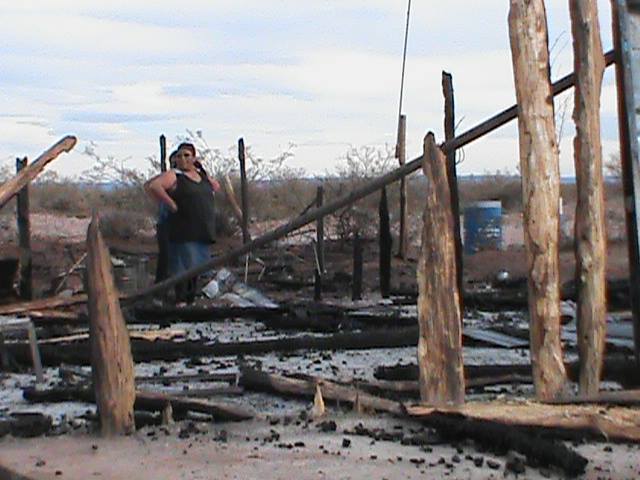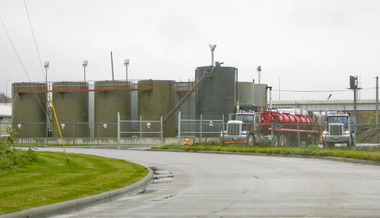By Steve Horn | September 7, 2013
The Republican-controlled House is voting today on a measure that would strip the president’s authority on Keystone XL pipeline approval, allowing Congress to push the project through before completion of the environmental impact study. (Photo/Matt Wansley via Flickr)
While President Obama made a big deal out of delaying the northern half of the Keystone pipeline’s construction, he compensated by signing an executive order to expedite similar infrastructure projects everywhere else. (Photo/Matt Wansley via Flickr)
Large segments of the environmental movement declared a win on Jan. 18, 2012, the dawn of an election year in which partisan fervor reigned supreme.
On that day President Barack Obama kicked the can down the road for permitting TransCanada’s Keystone XL pipeline’s northern half until after the then-forthcoming November 2012 presidential election.
“Northern half” is the key caveat: just two months later, on March 22, 2012 – even deeper into the weeds of an election year – President Obama issued Executive Order 13604. Among other key things, the order has an accompanying memorandum calling for an expedited review of the southern half of Keystone XL stretching from Cushing, Okla. to Port Arthur, Texas.
The day before, March 21, Obama flew on Air Force One to a pipe yard in Cushing – the “pipeline crossroads of the world” – for a special stump speech and photo-op announcing the executive order and memorandum.
Dubbed the Gulf Coast Pipeline Project by TransCanada – 95 percent complete and “open for business” in the first quarter of 2014 – the 485-mile tube will ship 700,000 barrels of tar sands crude per day from Cushing to Port Arthur, where it will then reach Gulf Coast refineries and be exported to the global market. It will eventually have the capacity to ship 830,000 barrels per day.
The subject of a large amount of grassroots resistance from groups such as Great Plains Tar Sands Resistance and the Tar Sands Blockade, the Gulf Coast Pipeline Project – when push comes to shove – is only the tip of the iceberg.
That’s because Obama’s order also called for expedited permitting and review of all domestic infrastructure projects – including but not limited to pipelines – as a reaction to the Keystone XL resistance.
A months-long Mint Press News investigation reveals the executive order wasn’t merely a symbolic gesture.
Rather, many key pipeline and oil and gas industry marketing projects are currently up for expedited review, making up for — and by far eclipsing — the capacity of Keystone XL’s northern half. The original TransCanada Keystone pipeline – as is – already directly connects to Cushing from Alberta, making XL (short for “extension line”) essentially obsolete.
Keystone XL’s northern half proposal is key for marketing oil obtained from the controversial hydraulic fracturing (“fracking”) process in North Dakota’s Bakken Shale basin.
Dubbed the Bakken Marketlink Pipeline, the segment has lost its importance with the explosive freight rail boom for moving Bakken fracked oil to market and other pipeline proposals. One of those pipelines, in fact, has received fast-track approval under the March 2012 Obama Executive Order.
Feeling the pressure from protest against the Keystone XL from groups such as the Tar Sands Action, Indigenous Environmental Network and others, Obama pulled a fast one: “wait and see” for XL’s northern half – which many claimed as a victory – and expedited approval of everything else via executive order.
Breaking down the Keystone XL executive order
Obama’s Keystone XL southern half March 2012 memo reads like Big Oil talking points.
“[W]e need an energy infrastructure system that can keep pace with advances in production,” Obama states in the Memo. “To promote American energy sources, we must not only extract oil — we must also be able to transport it to our world-class refineries, and ultimately to consumers.”
A metaphorical slap in the face to environmentalists who spent months working on opposing Keystone XL, Obama argued a more efficient, less bureaucratic means of approval was compulsory.
“[A]s part of my Administration’s broader efforts to improve the performance of Federal permitting and review processes, we must make pipeline infrastructure a priority … supporting projects that can contribute to economic growth and a secure energy future,” the memo reads.
Though the order issued an expedited permitting process for Keystone XL’s southern half, it also foreshadowed that expedited permitting would become the “new normal” going forward for all domestic oil and gas pipeline projects.
“To address the existing bottleneck in Cushing, as well as other current or anticipated bottlenecks, agencies shall … coordinate and expedite their reviews … as necessary to expedite decisions related to domestic pipeline infrastructure projects that would contribute to a more efficient domestic pipeline system for the transportation of crude oil,” the memo states in closing.
The memo also notes all projects placed in the expedited permitting pile can have their statuses tracked on the online Federal Infrastructure Projects Dashboard, with 48 projects currently listed.
Little time was wasted building the XL’s southern half after Obama issued the Order and within a slim two years, TransCanada will have its first direct line from Alberta to Gulf Coast refineries in southern Texas.
Muted opposition: “eco-terrorists,” SLAPP lawsuit threats
It’s not as if the Keystone XL southern half expedited permit has gone unopposed. It’s just that activists who have chosen to resist the pipeline have paid a heavy price for doing so.
A case in point: opposition to Keystone XL’s southern half has earned many activists the label – on multiple occasions – as potential “eco-terrorists,” named as such by TransCanada, the U.S. FBI and Department of Homeland Security’s Nebraska-based “fusion center” and local undercover police.
Other activists were threatened by TransCanada with a strategic lawsuit against public participation (SLAPP), all of whom made an out of court settlement in January 2013.
Activists agreed to “no longer trespass or cause damage to Keystone XL property including the easements within private property boundaries,” explained FireDogLake’s Kevin Gosztola in a January 2013 article.
The agreement was a quintessential “lesser of two evils” choice, given activists could have found themselves bogged down in legal fees from TransCanada and may have eventually owed the corporation big bucks.
“The activists had a choice: either settle or face a lawsuit in court where TransCanada would seek $5 million for alleged financial damages … that could have much worse consequences,” Gosztola further explained.
Beyond SLAPP threats, key lawsuits aiming to fend off TransCanada have also failed.
Texas lawsuit highlights expedited permitting corruption
One of those lawsuits in particular – filed on April 25, 2013 by a Douglass, Texas-based citizen named Michael Bishop representing himself in court – paints a picture of what President Obama meant when he said he would fast-track permitting for infrastructure projects going forward.
Before filing the lawsuit, Bishop penned a four-part series for EcoWatch in February and March of 2013 on his experiences as a landowner living a mere 120-feet from pipeline construction and dealing with TransCanada in Texas.
“I am amazed by the lack of understanding about this project by the general public and even more amazed that people in other parts of the country are so focused on the ‘northern segment’ while the pipeline is actually being laid right here in Texas and will begin transporting diluted bitumen, tar sands crude oil, to Gulf Coast refineries by the end of the year,” Bishop wrote in Part III. “So many seem oblivious to this fact.”
Bishop alleges in his Complaint for Declaratory Relief and Petition for Writ of Mandamus that on-the-books bread-and-butter environmental laws were broken when fast-tracked permitting for Keystone XL’s southern half unfolded.
The permitting mechanism utilized by the U.S. Army Corps of Engineers – following Obama’s March 2012 executive order and memorandum – was a Nationwide Permit 12.
Nationwide Permit 12 has also been chosen for fast-tracked permitting of Enbridge’s Flanagan South Pipeline. That pipeline is set to fill the gap – and then some – for Keystone XL’s northern half, bringing tar sands crude along the 600-mile long, 600,000 barrels per day pipeline from Pontiac, Ill. to Cushing, Okla.
A 2012 document produced by the Army Corps of Engineers explains Nationwide Permit 12 is meant for permitting of utility lines, access roads; foundations for overhead utility line towers, poles, and anchors: pipelines carrying corrosive tar sands crude go unmentioned.
The Corps’ document also explains Nationwide Permit 12 exists to “authorize certain activities that have minimal individual and cumulative adverse effects on the aquatic environment,” further explaining, “Activities that result in more than minimal individual and cumulative adverse effects on the aquatic environment cannot be authorized.”
Bishop cited the National Environmental Protection Act (NEPA), arguing Nationwide Permit 12 as applied to Keystone XL’s southern half violated the spirit of that law because no environmental assessment was conducted and no public hearings were held.
“Given the fact that the Corps was involved in the preparation of the TransCanada Keystone Pipeline XL for the State Department … knowledgeable of the toxic nature of the material to be transported and massive public opposition to the project, public hearings should have been held in accordance with the law,” wrote Bishop.
Further, the pipeline crosses “nearly 1,000 crossings of bodies of water in Texas alone,” according to Bishop’s complaint.
In following the dictates of the March 2012 executive order and memorandum, Bishop argues the U.S. Army Corps of Engineers acted in total disregard for long-established environmental law.
“The use of Nation Wide Permit-12 is not a substitute for following NEPA and the Corps, while having some degree of latitude, failed in its ministerial duty,” Bishop wrote. “There was a blatant disregard for established environmental law…which not only included public input, but also directed the agency to consider human health and safety.”
To date, the lawsuit has not been heard in court.
Hastening Bakken shale development
While the environmental community hones in on Keystone XL’s northern half, the business community has focused on expediting permits in the Bakken Shale and filling in the gap left behind by the lack of a TransCanada “Bakken Marketlink.”
Big Business has done so – in the main – by using pipelines to ship Bakken crude to key rail hubs.
One of the pipelines listed in the Federal Infrastructure Projects Dashboard is the Bakkenlink pipeline – not to be confused with the “Bakken Marketlink” – a 144-mile-long tube set to carry fracked oil from the Bakken to rail facilities that would then carry the product to strategic markets.
“Currently, crude oil from this region of the Bakken field is transported to rail facilities via truck,” explains the Dashboard. “The proposed BakkenLink pipeline provides an opportunity to eliminate a vast amount of overland truck traffic.”
Petroleum News Bakken, an industry news publication, explains Bakkenlink was proposed when the northern half of Keystone XL was put on hold by the Obama Administration.
“Originally the BakkenLink was intended to run all the way to Baker, Mont., where it was to connect to the Keystone XL pipeline, but when the Keystone XL project was put on hold in 2011, BakkenLink LLC modified its plan and opted to terminate the pipeline at the Fryburg rail facility,” Petroleum News Bakken explained.
The Bismarck Tribune explained Great Northern Midstream LLC – which wholly owns BakkenLink LLC as a subsidiary – has built capacity to load fracked Bakken oil onto 110-car unit trains via the Fryburg rail facility.
For sake of comparison, TransCanada’s Bakken Marketlink Pipeline – aka Keystone XL – was slated to bring 100,000 barrels per day of crude to market.
The freight trains scheduled to carry this oil are owned by Burlington Northern Sante Fe (BNSF). BNSF itself is owned by Warren Buffett, the fourth richest man on the planet and major campaign contributor to President Barack Obama in 2008 and 2012.
With plans to “spend $4.1 billion on capital improvements in 2013, a single-year record for an American railroad…BNSF says it is transporting more than half of the oil produced in the North Dakota and Montana regions of the Bakken,” according to a June 2013 Dallas Morning News article. “The boom would not be as big, nor would it have happened as fast, without BNSF.”
Recent investigative pieces on Buffett’s ties to the tar sands also shows he owns over $2.7 billion worth of stock in tar sands producers such as ExxonMobil, ConocoPhillips, General Electric and Suncor as of September 7, 2013.
Another key data point: a 70-unit train carrying 51,428 barrels of fracked Bakken Oil to a Canadian east coast export terminal owned by Irving Oil derailed and exploded in a fireball on July 2013, killing 47 people in Lac-Mégantic, located in Québec province.
Coming full circle, Irving Oil and TransCanada announced a joint venture to develop and construct an export facility in St. John, Canada on August 1, less than a month after the lethal Lac-Mégantic derailment. That facility would take tar sands crude shipped from the 1.1 million barrels per day proposed TransCanada Energy East pipeline and export it to the global market.
Bakken Federal Executives Group
Bakkenlink isn’t the only game in town for the March 2012 executive order’s impact on expedited permitting in the Bakken Shale.
Enter the Bakken Federal Executives Group – helped along by Obama’s Assistant for Energy and Climate Change Heather Zichal – the Obama White House’s industry-friendly liaison to Big Oil.
“Among Zichal’s tasks is wooing Jack Gerard,” explained a May 2012 article in Bloomberg. Gerard was thought to be one of the candidates for Chief-of-Staff for Republican Party candidate Mitt Romney if he became president.
“[I]dentified by the President as one of five priority regional initiatives under Executive Order 13604 … [the] [g]roup represents a dozen federal bureaus with review and permitting responsibilities that are working collaboratively to address common development obstacles associated with the Bakken boom…,” explains an August 7 U.S. Department of Interior press release.
Newly-minted U.S. Secretary of Interior Sally Jewell – a former petroleum engineer for Mobil Oil Company – recently took a trip to the Bakken Shale oil fields to advocate for the dictates of the March 2012 Executive Order.
“The group’s Aug. 6 itinerary began with a tour of a rig operated by Continental Resources Inc., followed in the afternoon by a tour of facilities operated by Statoil, which has invested more than $4 billion in the Bakken,” explained the Oil and Gas Journal.
Continental Resources’ CEO is Harold Hamm, who served as energy advisor to Mitt Romney, the Republican Party presidential nominee for the 2012 election.
“Interior continues to be a leader in implementing President Obama’s vision for a federal permitting process that is smarter [and] more efficient,” David Hayes, Department of Interior Deputy Secretary said in a June press release. “By coordinating across the many federal agencies involved in the Bakken region … we are able to offer a better process for industry.”
Obama May 2013 memo: Cut it in half
On May 17, 2013, President Obama issued an updated memorandum titled, “Modernizing Federal Infrastructure Review and Permitting Regulations, Policies, and Procedures.”
Citing his March 2012 executive order as precedent, this memo called for cutting the time it takes to approve major infrastructure projects – pipelines included – in half.
“By the authority vested in me as President by the Constitution and the laws of the United States of America, and to advance the goal of cutting aggregate timelines for major infrastructure projects in half,” he states in the memo, with a final goal to “institutionalize or expand best practices or process improvements that agencies are already implementing to improve the efficiency of reviews.”
Scary math
Adding insult to injury, a recent story appearing in The Wall Street Journal explains Keystone XL’s northern half is no longer a priority for refiners, investors or the industry at large.
With a further delay in the cards due to conflicts of interest in the State Department’s environmental review process, it may start to matter less and less for Big Oil as it plans out its other options for getting its product to market going forward.
“U.S. companies that refine oil increasingly doubt that the controversial Keystone XL pipeline [northern half] will ever be built, and now they don’t particularly care,” explained the Journal.
Enbridge recently proposed an expansion for its Alberta Clipper pipeline (approved by Obama’s State Department in August 2009, now known as “Line 67”) from 450,000 barrels per day to 570,000 barrels per day to theState Department in a November 2012 application.
It upped the ante since the original Clipper expansion application — a move met with activist opposition — requested 800,000 barrels of tar sands run through it per day.
That’s on top of Enbridge’s recently proposed Nationwide Permit 12 – paralleling what TransCanada did for Keystone XL’s southern half – set to bring 600,000 barrels per day of tar sands to Cushing, Okla from Pontiac, Ill.
The reaction to pressure against building Keystone XL’s northern half has been – put simply – “build more and faster.” Simple math and geography shows – as The Wall Street Journal boasted – project permitting parameters have tilted more and more in Big Oil’s favor under President Obama’s watch.
With full-throttle expansion of the tar sands described as “game over for the climate” by now-retired NASA scientist James Hansen — and with fracked oil and gas found to be dirtier than coal when examined in its entire lifecycle according to a May 2011 Cornell University study — it makes for scary math indeed.


